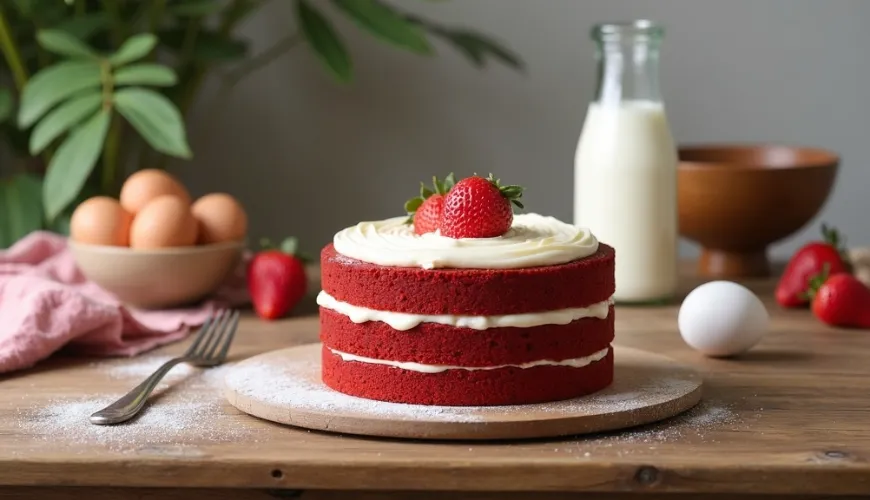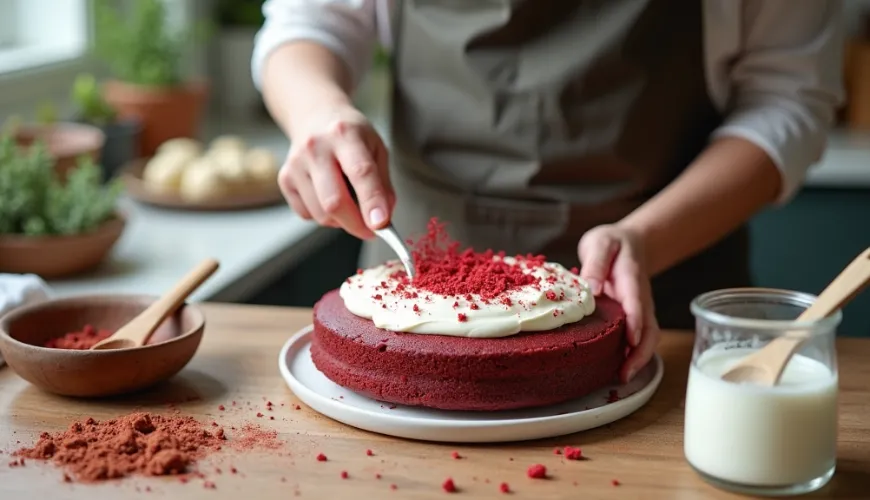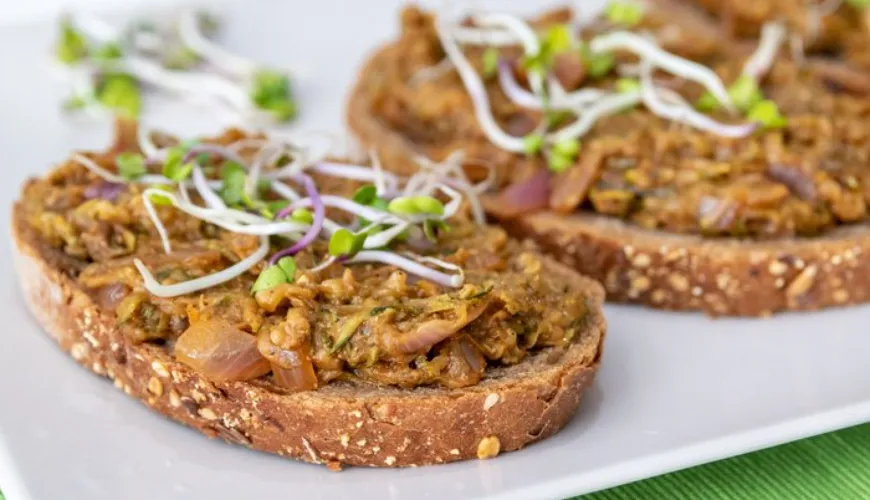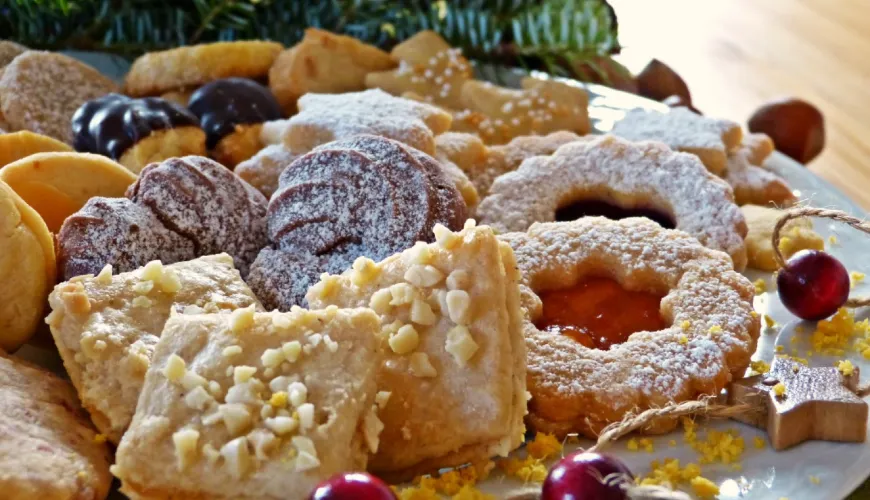
Discover the Magic of Red Velvet Cake and Why It's So Popular

Red Velvet Cake as a Sweet Legend with a Modern Twist
When you think of a red velvet cake, most dessert lovers envision the iconic red sponge with a delicate texture, topped with cream that almost melts on the tongue. This cake, whose name could be translated as "red velvet," has become a staple not only in bakery displays but also on celebratory tables worldwide. And it’s no wonder. It combines nostalgia from bygone days with elegant modernity while remaining surprisingly simple to prepare. Even here, red velvet cake is gaining more fans, not just for its appearance but also for its exceptional flavor combination of cocoa sponge and delicate cream cheese. But how did it originate, and why does it remain so popular even after more than a hundred years?
A Bit of History and a Pinch of Mystery
The origin of this famous dessert is often associated with the southern states of the USA, particularly Texas and the state of New York. The first mentions of "velvet" cakes date back to the 19th century when desserts with a smoother, softer consistency began to appear thanks to the use of cocoa powder. It wasn't until later that the iconic coloring was added – then from red beets or natural annatto dye – which gave the cake its characteristic red hue.
The real boom of red velvet, however, occurred in the 1940s when the American retailer Adams Extract began promoting red food coloring along with a recipe for "Red Velvet Cake." Since then, it has become a symbol of celebration, luxury, and later home comfort. Today, it can be found not only in its classic form but also as cupcakes, layered jar desserts, or even as ice cream.
But what creates the unmistakable taste of this cake? It’s the combination of moist cocoa sponge with a hint of vanilla and slightly tangy cream. Traditionally, cream cheese frosting was used, but in recent years, red velvet cake with mascarpone has gained popularity, being slightly milder and less tangy – an ideal choice for those who prefer a creamier taste.
How to Make Red Velvet Cake Step by Step
Looking at a finished red velvet cake, it may seem like its preparation is the domain of professional bakers. But the opposite is true. The key to success is a quality ingredient base and the correct order of steps. The recipe for red velvet cake itself isn't complicated, but it requires precision and a bit of patience.
The base of the batter includes all-purpose flour, quality cocoa powder (in a small amount so as not to overpower the taste), sugar, eggs, buttermilk, oil, and a bit of vinegar. It’s the buttermilk and vinegar that react with the cocoa and baking soda, creating not only the tender structure of the cake but also a slightly reddish tone – which is then enhanced by adding red natural coloring, ideally without artificial additives.
The creamy filling can be classic with cream cheese or quark, but mascarpone gives the cake a softer, velvety undertone. Simply mix it with whipped cream and a bit of sugar and optionally vanilla extract. The result is a light, smooth cream that beautifully contrasts with the moist sponge.
An example in practice? Imagine a birthday party with family. Instead of a classic chocolate cake, a red velvet with mascarpone appears on the table. Its slice looks like it’s from a cookbook cover – vibrant red, with white cream in regular layers. The first bite surprises with its delicacy and balanced flavors. Guests are asking for the recipe before they even finish their coffee.
Decorating the Red Velvet Cake
One reason why the red velvet cake stands out is its visual appeal. The basic contrast of the red sponge with white cream looks elegant yet pleasantly homey. But decorating takes the entire experience to the next level. While some opt for a minimalist look with a light dusting of sugar, others get creative with fruit, edible flowers, or even gold dust.
For popular birthday versions, crumbs from the cut-off sponge are often used – sprinkling the top with fine red “sand” gives the cake a luxurious look without unnecessary complexity. Another trick might be using mascarpone cream spirals or layers of raspberry puree between tiers, enhancing both flavor and color.
Decorating thus becomes not only an aesthetic complement but also a flavor benefit. And this is where the magic of red velvet shows – the fusion of appearance, taste, and texture in a harmonious whole.
Why Will Red Velvet Never Go Out of Fashion?
You might wonder why this cake is so popular when there are so many other variations – chocolate cakes, fruit sponges, honey cakes… The answer is simple. Red velvet cake combines the best of several worlds: gentle chocolate tones without excess sugar, a velvety texture of the sponge, light cream, and a visual effect that captures attention at first glance.
Moreover, it easily adapts to different occasions. For Valentine's Day, it can be baked in a heart shape, at weddings it stands out in a layered form with flowers, and for a kid’s party, it works great as a cupcake. Another big advantage is that red velvet cake with mascarpone lasts in the fridge for several days without losing quality – and sometimes it’s even better the next day when the flavors have melded well.
According to the American culinary magazine Bon Appétit, red velvet regularly ranks among the top 10 favorite cakes in the world. And even though trends are constantly changing, this classic endures. Perhaps because, in today's world, we are seeking not only new experiences but also a return to quality craftsmanship and something with “soul.”
Red velvet is not just about sweetness – it’s an iconic dessert with a story, connecting the past with the present. Whether you bake it according to the traditional recipe or add your own twist with mascarpone, one thing is certain: it will become the centerpiece of any celebration. And perhaps even a small reason for happiness in the middle of an ordinary week.

